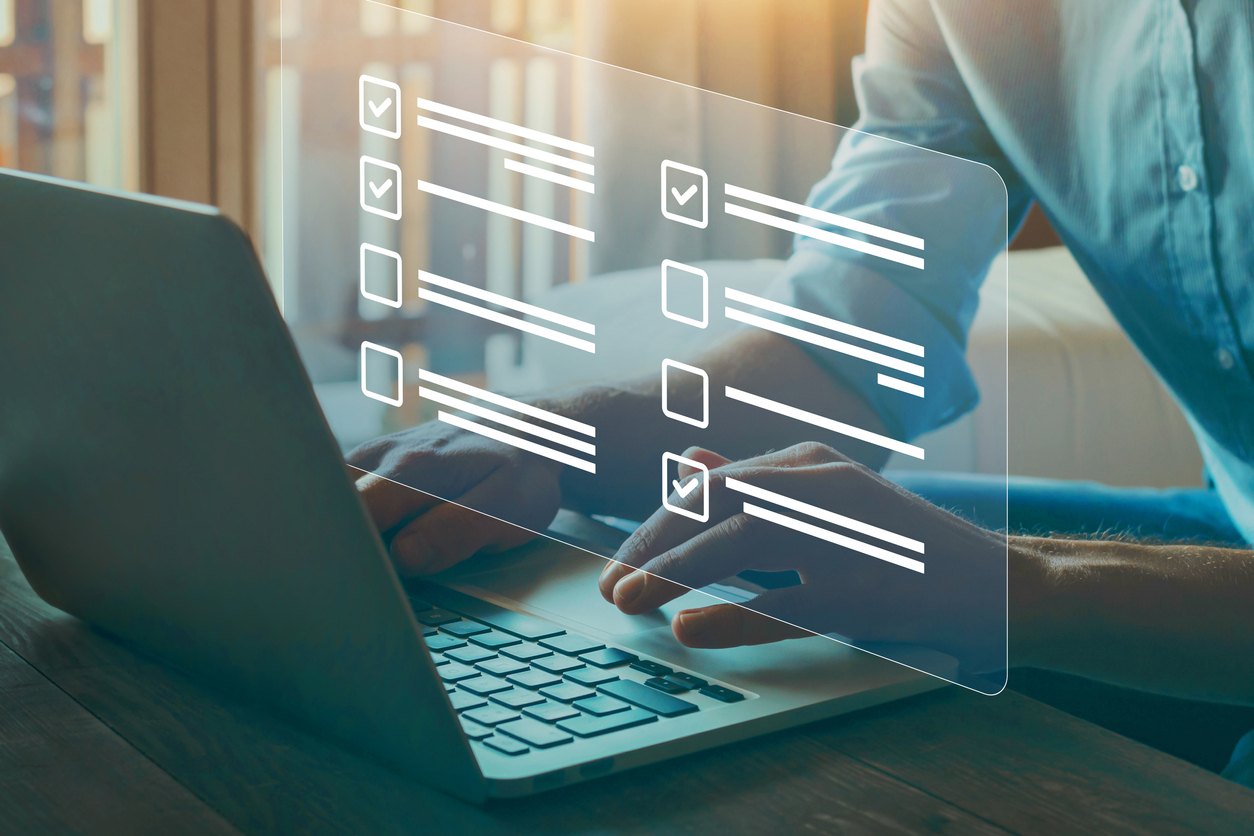
Many sales and marketing teams believe that good landing page designs are highly essential for conversions. While this is true, a study of 40,000 landing pages by Unbounce revealed that the most influential element in landing page conversion was the landing page copy.
It influenced conversion two times more than design did.
So, yes, landing page designs are beneficial for conversion. But to really hit gold, your landing page copy must be compelling. That's why you need a blueprint to help you write alluring copy.
Here are eight helpful tips for writing high-converting landing page copy.
1. Write Attention-Grabbing Headlines
The landing page headline is one of the most essential elements on your page, mainly because it's the first thing your visitors will see. The more powerful it is, the higher your chances of getting your web visitors’ attention and encouraging them to take the next step, like clicking the Call-to-Action button.
It's essential to remember that when a user lands on your post-click landing page, they don't painstakingly go through every single word of copy. Not everybody has the luxury of time — especially in this digital world where the average person's attention span is a short 8.25 seconds.
Every potential customer that lands on your page scans, skims, and auto-filters words on the page. Customers will pay attention to words in the headline if they're captivating and stand out, like on NATIVE’s landing page below.

Source: Native Deodorant
So, to optimize your landing page headlines to convert, focus on the words in your headline copy and make sure it grabs the attention of readers and skimmers alike. Here are a few tips for nailing your landing page headlines:
- Make your headline bold, informative, and jargon-free.
- Shorter landing page headlines that pack a punch are preferable.
- Strong sub-headlines should showcase your eCommerce business's core benefits in a compelling way.
- Leverage compelling images to drive home the headline point.
- Complete the conversion process with a strong, straightforward CTA.
Landing page headlines can be difficult to create, mainly because you only have a few words to express your ideas. However, a tool like Writer's AI-automated blog title generator can help you create several clear and concise headline copies. Then, you can tweak the results or select your preference as you wish.
2. Communicate Your Unique Value Proposition
A unique value proposition (UVP) is a statement that expressly tells potential customers how your products or services will solve their needs. The UVP does this by distinguishing what your business is offering customers from what your competitors already offer.
A unique value proposition is a lot like having sales reps brag about your brand with enthusiasm — and for free. Unfortunately, because of the importance of this element for your landing page copy, it's usually quite challenging to write.
For one, it's also among the first words your target customers will see when they visit your page. Secondly, you only have a few words to convey your persuasive message.
But there's no magic trick to writing UVPs.
It's as simple as telling people what your brand does, especially if your business offerings are truly unique. For smaller, growing brands, the best practice is to be clear about who you sell to and the steps you'll take to ensure you keep your promise.
See this example copy from WeWork, for instance.
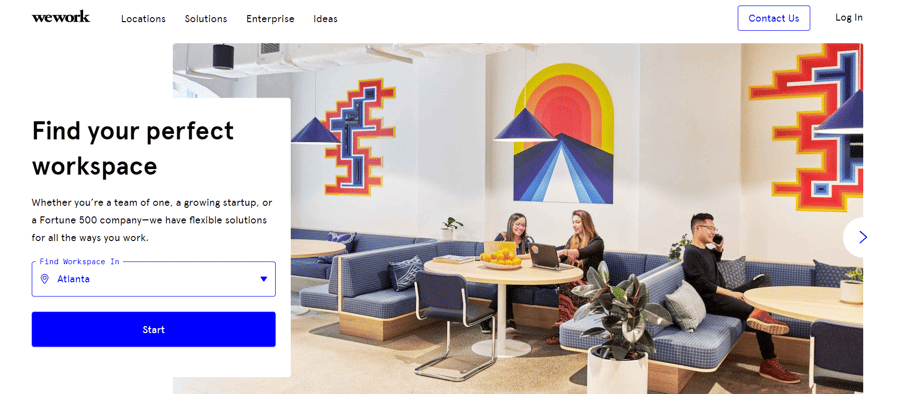
Source: WeWork
To clearly communicate your UVP, your headline and subheadline should answer the following questions:
- What value does your product/service deliver?
- Who do you provide that value for?
- How will you provide that value to your target customers?
Your UVP is the key to helping your brand not look and feel like a clone of similar brands. So, the key is offering as much unique value as possible to trump or counter your competitors’ offers.
3. Highlight The Benefits
Your post-click landing page copy should convey the core benefits of your business and not just the product or service. The truth is most customers don't particularly care about the product and services or the solution you're trying to sell.
Shocking, right?
Typical or traditional sales practices would often encourage sales and marketing teams to use the solution-sales selling technique. The technique encourages salespeople to align a solution with a customer's needs when pushing their product or service. But in reality, solution selling is becoming outdated — this technique is no longer converting customers like before.
Customers know the solution they need, thanks to the internet and search engines, where they can research before buying. The advancement in technology now leaves eCommerce businesses with customers that know precisely what they’re looking for, including dedicated features, pricing, and specifications.
As a result, selling solutions doesn't hold much weight with today's customers anymore. Instead, you must pitch your products' "can't-miss benefits" to target customers. See how Watch Gang does it in this landing page copy.
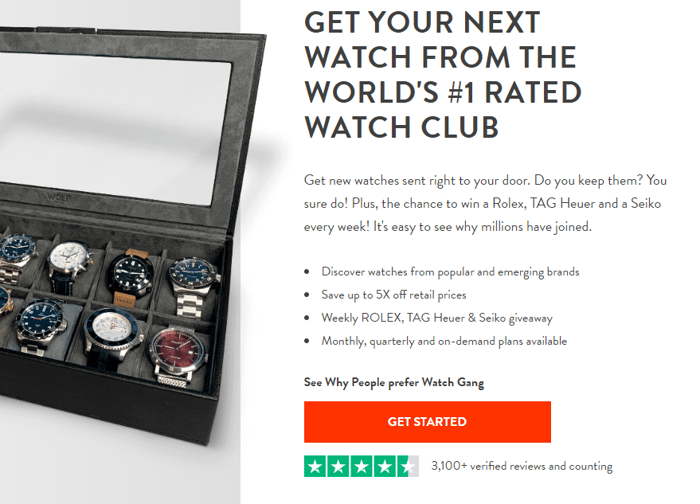
Source: Watch Gang
You can list your benefits briefly in short bullet points or create different short sections highlighting how each of your product’s features will benefit your customers. This is especially useful for products that provide complex solutions.
4. Create A Compelling CTA
Calls-to-Action (CTAs) are like the final sales pitch that determines whether or not your target customer will convert. CTAs are designed to trigger an immediate response from your customer or encourage them to make an immediate purchase. They are direct and precise instructions that compel your audience to take a particular action when they land on your landing page.
Many businesses choose the usual Action CTAs for their landing pages. While these may be clear, they are not as compelling as Value CTAs. See how Value CTAs compare to Action CTAs in the examples below.
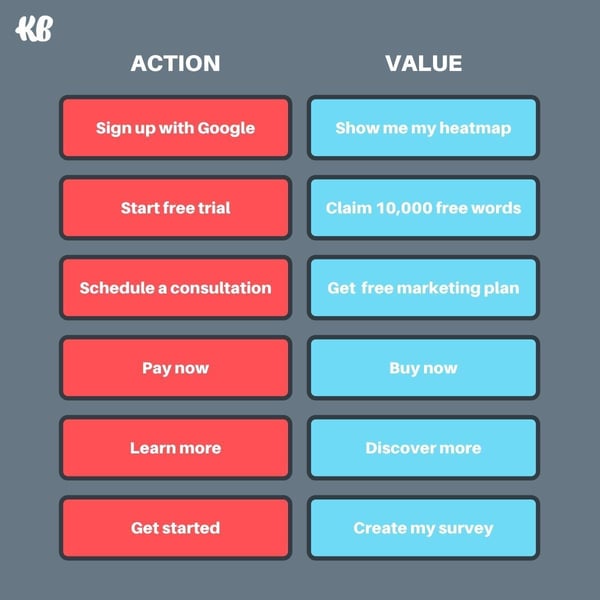
Source: KlientBoost
A good CTA example that emphasizes the value and eliminates objections is "Get 20% Off Now" instead of "Get a Discount.”
Effective landing page copy should build up towards asking for conversion from your ideal customer. CTA buttons are one of the textual elements on your landing page that customers read.
So, whether it's asking customers to add items to their cart, sign up for your newsletter so you can market to them with an SMTP email, or fill out a customer satisfaction survey form after shopping on the website, the way you ask is important. The key to writing a compelling CTA is emphasizing value and handling any last-minute objections your ideal customer may have.
5. Add Social Proof For Credibility
Social proof is a psychological and social concept that encourages customers to copy the action of other customers because they believe it's the appropriate way to behave in that situation.
So, in digital marketing and eCommerce, social proof makes customers think, "if others are buying or paying for this, then I should too." This is why people hurry to get the latest Apple product because everybody appears to be buying it.
In eCommerce marketing, social proof helps you appear credible and trustworthy. It tells your prospects that other customers are buying your products, so they should too.
You can feature social proof on your landing page in various formats.
It could be through customer testimonials, client logos, number of downloads or users, online reviews and ratings, industry awards, blog comments, social mentions, etc.

Source: Meowbox
For example, Meowbox, in the image above, includes a subheadline on its landing page highlighting top sites and magazines that recommend its products.
Social proof makes for compelling landing page copy because it gives your customers an idea of what other customers have experienced when they purchased from you.
6. Keep It Simple And Avoid Buzzwords
Simplicity wins over complexity when it comes to copy. Marketing jargon and other buzzwords don't appeal to landing page visitors or customers in general. Why? Because it doesn't make sense to people who may not be familiar with the industry terminologies.
However, if it is indispensable to use eCommerce jargon or buzzwords, follow up with easy-to-understand explanations like Savile Row has done on their landing page below.
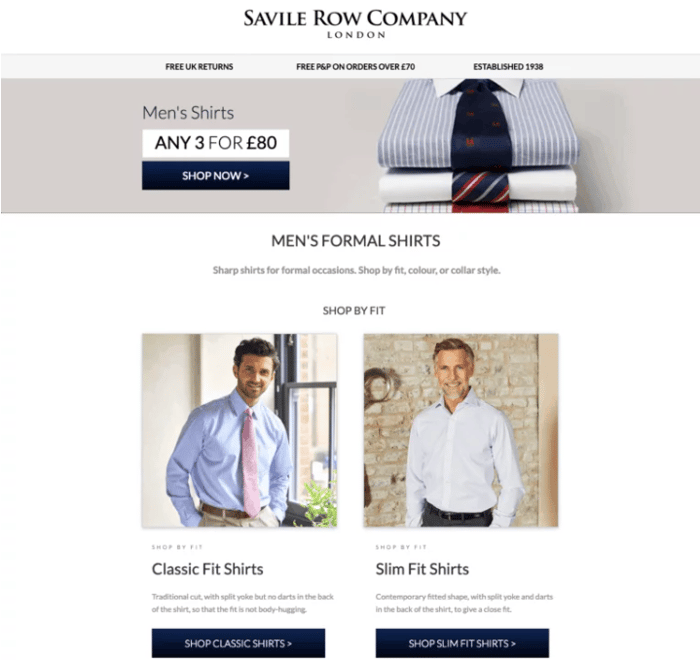
Source: Unbounce
While you don't need to dumb down the terms on your landing page, you must ensure that it's written in a way that any category of your intended market will understand.
7. Use a Conversational Tone
Just as it's important to stick with simplicity, it's also essential to craft your landing page copy with conversational language. Your intended market comprises humans, so write like you're talking to them.
Avoid writing copy that sounds robotic and stiff. For instance, see this simple conversational landing page copy from THREAD. It's engaging, crisp, and natural-sounding.
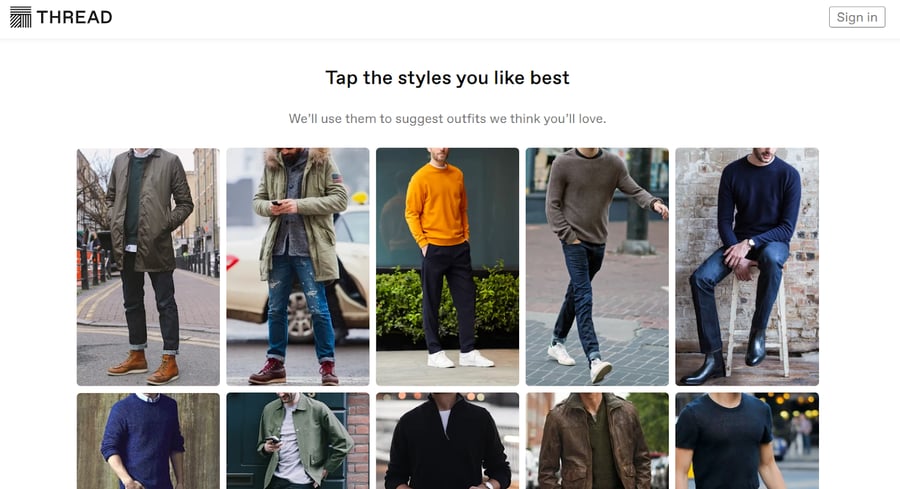
Source: Thread
To nail this effectively, here are some writing tips:
- Use regular conversational words.
- Write in short and natural sentences.
- Include humor.
- Write in the first person.
- Use the regular expressions you use in day-to-day conversations.
People want to read copy that is relatable and speaks to them. It helps them connect better with your brand, so make your copy personal and friendly.
8. Test Your Copy
Experimenting with your landing page copy is crucial to find what converts higher for your business. A/B testing (split testing) is one method many marketing teams use for experimentation. It involves testing two versions (A and B) of a single variable to determine how your intended market responds to each version.
Say you're creating a landing page copy to encourage your visitors to click your mobile business card and contact you. Conducting an A/B test using two different landing page templates can show you the landing page version that converts more.
Each landing page must contain varying copy elements to make your test effective. For example, if CTA "A" says "Contact Me," then CTA "B" can say "Get Free Consultation Today." So when you run the A/B test, the goal is to discover which CTA elicits a positive response and converts more customers.
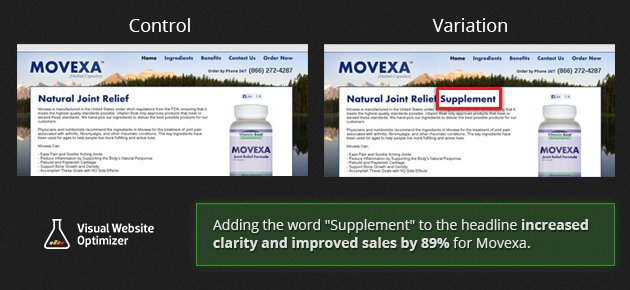
Source: VWO
Other elements of your landing page copy you can test include headline or subheadline variations (see image above), benefits, and even the color of the CTA button.
In creating effective landing pages, it’s best to leave personal biases, guesswork, and sometimes, even best practices aside. Only through testing variations can you determine what really works.
In Closing
Keep trying until you find what works. That's the rule many marketers swear by when creating persuasive landing page copy for their brands. Write your headline copy with your intended market in mind, finding ways to highlight your outstanding value proposition simply.
Write headlines that grab visitor attention and CTAs that compel your audience to click through, include social proof to show brand credibility, and keep your copy simple and conversational. Finally, test until your landing page copy converts most of your visitors into long-term customers.
Follow these tips and write effective, compelling, and converting landing page copy. All the best!





Leave a reply or comment below